Post by Denesa Oberbeck, Ph.D.
Senior Research Associate, Department of Behavioral Neuroscience, OHSU
Another early start for our volunteers, who brought their brains (plus extras!) and knowledge to 6th graders at Shahala Middle School – beginning at 7:45 am!
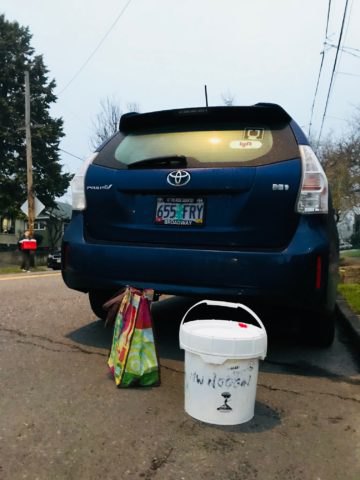
LEARN MORE: Noggins in Nod, The science of sleep
We’ve been to Shahala before, for earlier discussions of synapses and brain “myths,” like the inaccurate though prevalent idea that the right hemisphere is purely for art, and the left for science…
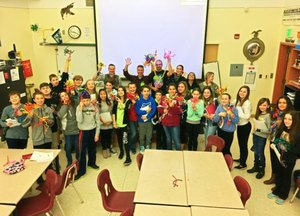
LEARN MORE: Synapses @ Shahala!
On this crisp and clear day, we delivered neuroscience and art to welcoming crowds totaling ~180 students – six classrooms in three sessions – for a busy morning of inquiry and exploration. Bringing real human, mouse and monkey brains, bright 3-D printed brains and millions (well, plenty) of pipe cleaners, we were ready to teach, amaze, hear from and empower the next generation..!
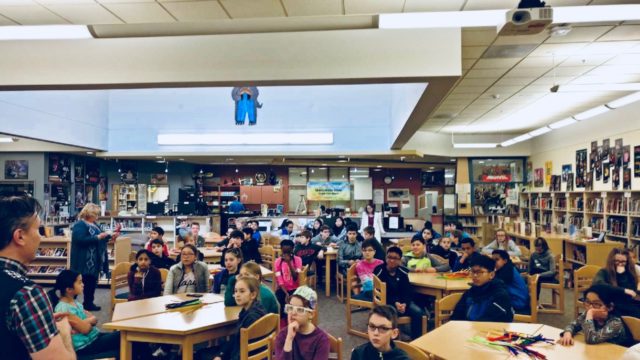
Our volunteers included Noggin Resource Council member Joey Seuferling, Jade Osilla, Mackenzie Figuracion and Krystal Nguyen from Portland State University, and Denesa Oberbeck from OHSU, all led by Noggin Arts Coordinator Jeff Leake. We started each session with an introduction and then launched right into an explanation of where our brains come from (both evolutionarily and from BioGift and MedCure) and the specifics of brain regions and cell types…
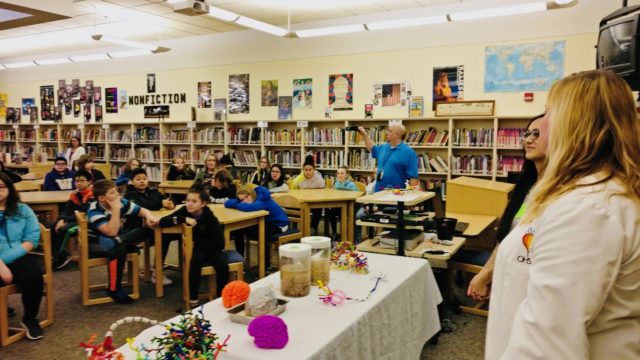
LEARN MORE: The Evolution of Brains from Early Mammals to Humans
LEARN MORE: How humans evolved large brains: comparative evidence
LEARN MORE: The Human Brain in Numbers
After this brief overview, we always love to hear about what students know already about their brains. Or are curious to ask! Questions and assertions range from the personal to the scientific – the students always test our knowledge and impress us with their own:
“Did you kill people to get these brains?” Um, no! “But if people show up with human organs,” suggested Jeff, “you should always ask where they got them!”
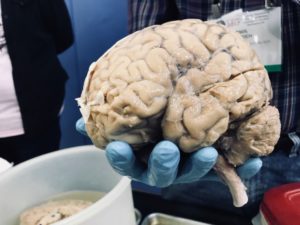
LEARN MORE: BioGifting Brains
“Are brains edible?” Definitely not after being fixed with preservative! And it’s not the best menu item in general, even for fresh brains – mis-folded proteins called prions may be lurking in human (or cow) nervous system tissue, and if consumed could potentially cause disease in you…
LEARN MORE: Prion Diseases
LEARN MORE: What is Creutzfeldt-Jakob disease?
“Zebra fish share 85% of DNA with humans…” Perhaps not surprising, given the basic metabolic activities – including cell division, maintenance, etc. – that we all share…
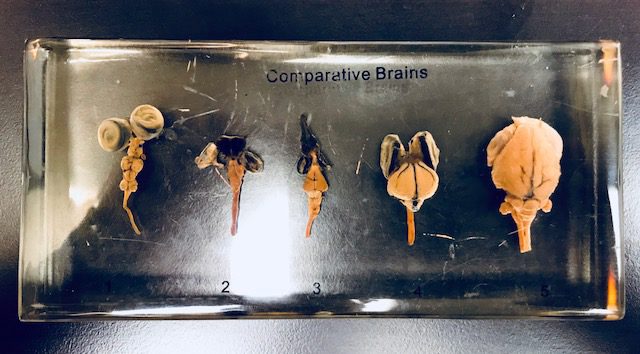
Fish (bigger fish!) brain on the left (with eyeballs) – mammal on the right…
LEARN MORE: Genes In Common
LEARN MORE: Your inner fish
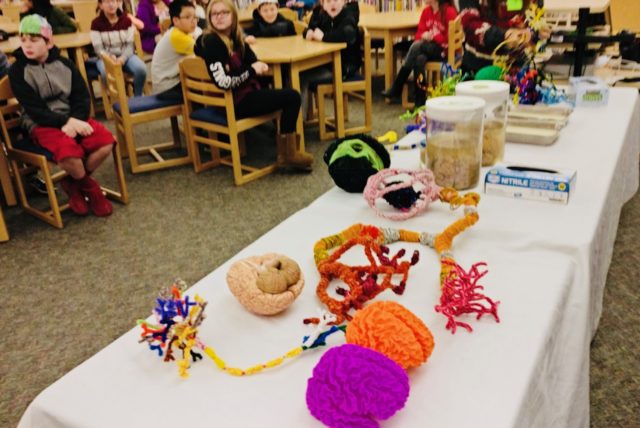
After a discussion about these topics and more – the goal is to encourage kids to share what they currently know or are curious about – we got down to the nitty gritty of neuroscience – how specialized cells of the brain (neurons) conduct messages and what they look like. Our fearless leader Jeff then led all of us in a step by step description of how to make a model pipe cleaner neuron.
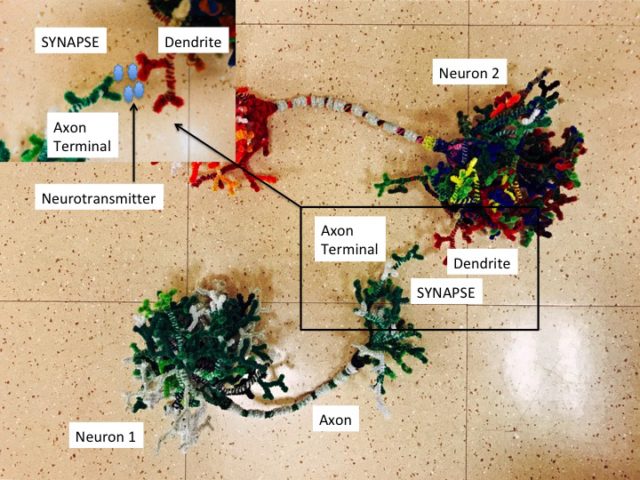
MAKE YOUR OWN: STEAM Art Projects
Students are always adept at describing neurons in terms of things more familiar – antenna, electrical cords, computers – and are amazed to learn that 100 billion of these specialized cells live within each and every one of their own brains! We also discussed how the number of neurons diminishes with age – the students always crow with glee at the knowledge that they have more neurons than all the adult volunteers in the room – but that individual synapses may increase or strengthen with experience, resulting in more effective network connections.
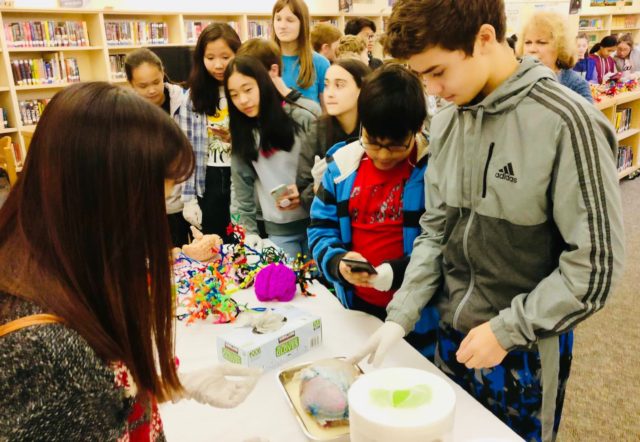
LEARN MORE: Brain Basics: The Life and Death of a Neuron
After building individual pipe cleaner neurons, each student got a chance to examine and touch a real human brain! Afterwards, students expressed gratitude: “I just wanted to say thank you for coming to my school today. My favorite parts were touching the brain and making the neurons because it was really cool to see what a neuron would physically look like, and the brain was so cool to touch. I also liked the touching the brain because it was so cool to see something that is the same thing you have in your head.” – Lauren Neuharth, 6th grader.
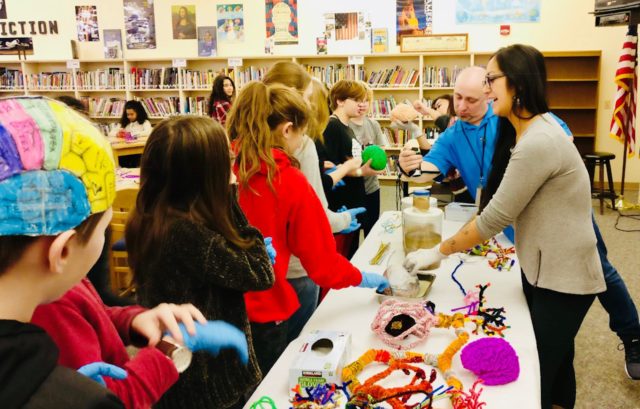
Many thanks to the teachers, students and staff at Shahala for welcoming us to school! We’ll be back next week!



